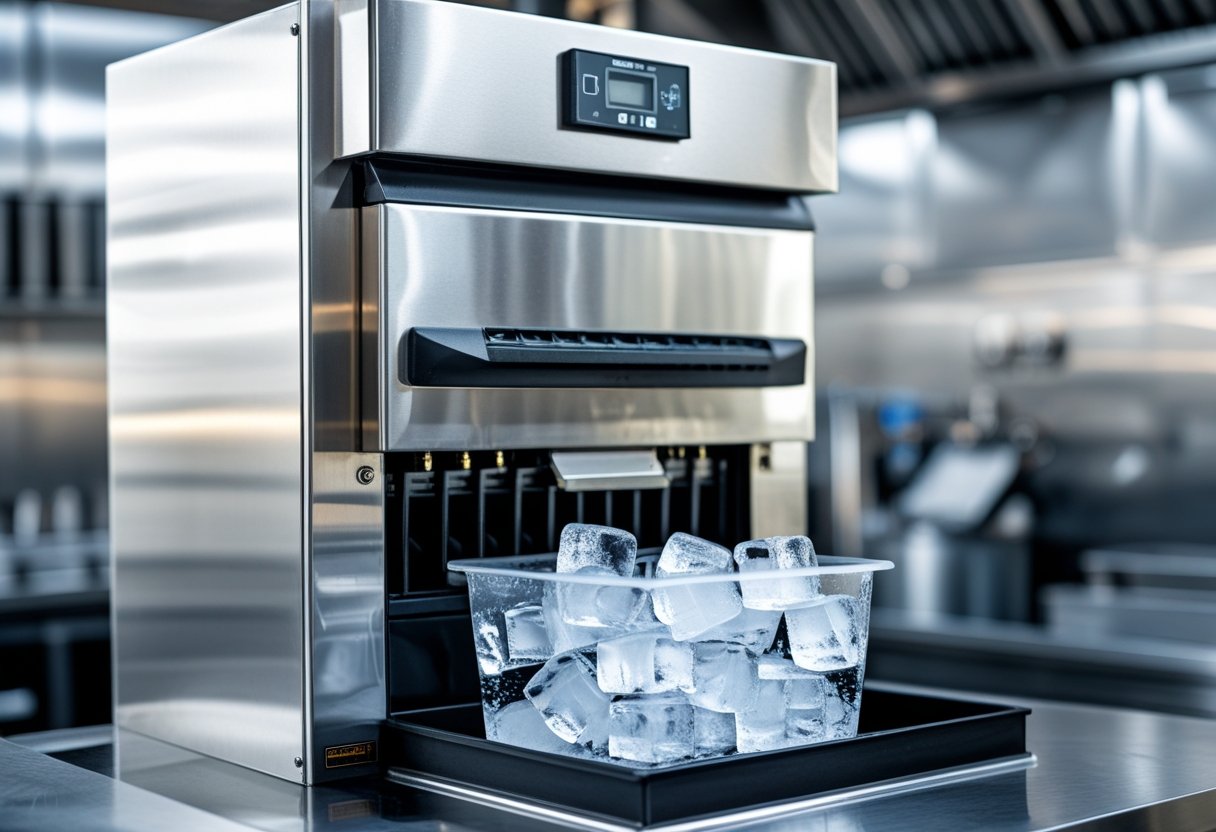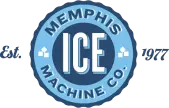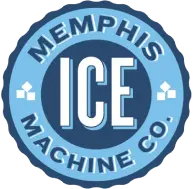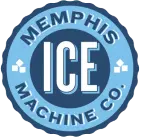proudly serving
the mid-south

Ice Machine Installation for Bars Made Easy and Affordable
When you run a bar, you need a reliable ice machine to keep drinks cold and customers happy. Installing the right commercial ice machine means making sure it fits your space, meets your ice demand, and drains properly.
Choosing where and how to install your ice machine affects its daily performance. From finding the right drain setup to matching the machine size with your busiest times, these details matter.
Your ice machine should work smoothly without interruption. This lets you focus on serving your customers.
At Memphis Ice, we’ve helped Mid-South businesses with ice and refrigeration since 1977. When your ice machine runs well, your entire bar runs better.
Let’s get your new machine set up right to keep your drinks cold and your busy nights flowing.
Choosing the Right Ice Machine
Picking the right ice machine for your bar means knowing how much ice you’ll need, what type fits your drinks, and how much space you have. Match your daily ice demand with equipment that fits your workflow and keeps drinks cold without wasting energy or money.
Evaluating Bar Ice Needs
Start by figuring out how much ice your bar uses during peak periods. Consider the number of customers you serve and the types of drinks you offer.
Cocktails with large ice cubes or crushed ice need different amounts. Think about future growth if your bar plans to expand or increase service hours.
Build in some extra capacity. Ice machines list their daily production in pounds, so choose one rated a bit higher than your highest expected demand.
Tracking ice use week by week can help you avoid running out when business picks up. This keeps your bar running smoothly.
Types of Ice Machines for Bars
There are several types of ice machines, each making ice suited for different uses:
- Cube Ice Machines: Produce clear, solid cubes. Great for most cocktails and keeping drinks cold longer.
- Nugget Ice Machines: Make soft, chewable ice that chills drinks fast. Popular at bars serving casual drinks or soft drinks.
- Flake Ice Machines: Create thin, soft ice perfect for garnishes or keeping seafood displays cold. These are less common in bars.
Choose a machine type that fits your drink menu and customer preferences. Some bars prefer nugget ice for its texture, while others opt for classic cubes.
Size and Production Capacity
The size of your machine depends on your bar’s daily ice needs and available space. Machines range from small units producing under 200 pounds per day to larger ones making 1,000 pounds or more.
Measure your installation space carefully to ensure the unit fits with proper ventilation and access for maintenance. Also, consider storage capacity—some machines come with built-in bins, while others connect to separate storage.
Select a machine that produces 20-30% more ice than your daily requirement. This buffer helps cover unexpected busy times.
Keep energy efficiency in mind to save on utility bills.
Preparing for Installation
Before installing your ice machine, focus on picking the right spot, ensuring proper power supply, and setting up the plumbing correctly. These steps keep your machine running smoothly and help you avoid costly problems later.
Site Selection and Space Requirements
Choose a location with enough room for your ice machine and easy access for maintenance. The area should have at least 6 to 12 inches of clearance on all sides for ventilation.
Avoid spots near heat sources like ovens or direct sunlight, which can make your machine work harder. Make sure the floor can support the machine’s weight, especially when it’s full of ice.
Install the machine near your bar or drink prep area to help your staff work faster. Keep the machine off damp floors to prevent rust and electrical issues.
Power and Electrical Considerations
Your ice machine needs a dedicated electrical outlet with the right voltage and amperage recommended by the manufacturer. Check that your wiring meets local electrical codes to avoid safety risks.
Using a dedicated circuit prevents overloads that can cause outages. Ground the machine properly to avoid electrical shocks and damage.
If you’re unsure about your power setup, ask an electrician to verify or upgrade your connections before installation. This preparation saves time and keeps your equipment safe.
Plumbing and Water Supply Setup
Your ice machine needs a reliable water source with clean, cold water. Use a dedicated water line with a valve nearby for easy shut-off during maintenance or emergencies.
The water pressure should meet the manufacturer’s recommendations—usually between 20 and 80 psi. Plan for proper drainage of melted ice and waste water.
Most machines require a floor drain or a pump system to handle multiple drain lines. Avoid routing drains near electrical wiring or food prep areas to keep your bar safe and sanitary.
Regular water filtration can extend your ice machine’s life by reducing scale and buildup. Ask your ice machine provider about filtration options suited for your water quality.
Step-by-Step Ice Machine Installation Process
Installing your ice machine correctly makes a big difference for your bar’s daily operations. You’ll need to unpack it carefully, find the best spot with proper leveling, and connect water and drainage the right way.
These steps help your machine work smoothly and keep your space clean and safe.
Unpacking and Inspecting the Unit
When your ice machine arrives, unpack it carefully. Remove all packaging materials without rushing to avoid damage.
Check the machine for dents, scratches, or missing parts. Inspect the power cord, water inlet, and drain connections to make sure everything is intact.
If you notice any problems, contact the supplier before moving forward. Keep the installation area clear and clean to prevent dirt or debris from entering the machine.
Handle the unit with care to protect it from early breakdowns and ensure it works right from the start.
Proper Positioning and Leveling
Place your ice machine on a flat, sturdy surface near a power source and water supply. The position should allow good airflow around the machine for efficient cooling.
Avoid spots with direct sunlight or high humidity, as these can cause extra wear. Use a level tool to adjust the feet so the machine sits evenly.
An unlevel machine can cause ice to form unevenly or water to drain poorly. Make sure there’s some clearance behind and above the unit for ventilation and service access.
Proper placement helps your ice machine last longer.
Connecting Water and Drain Lines
Your ice machine needs a clean water supply and a proper drain to work well. Use a cold, potable water line with a shutoff valve for easy maintenance.
Connect the water line to the machine’s water inlet following the manufacturer’s instructions to avoid leaks. Attach the drain line to remove excess water and condensation.
The drain should flow freely to a floor drain or sump pump without any sags or bends where water could collect. Make sure all connections are tight and sealed.
Proper water and drainage setup keeps your machine efficient and your bar floor dry.
Safety and Compliance Guidelines
Installing an ice machine properly means following rules for safety, ventilation, and food safety. These steps help your ice machine work well, stay clean, and meet health codes.
Local Codes and Regulations
Before you install your ice machine, check local codes and regulations. These rules vary by city or county and cover electrical work, plumbing, and waste disposal.
You’ll need permits for electrical and water connections. Make sure your plumbing follows rules for drainage to prevent leaks or backflow.
Use licensed professionals to keep your installation up to code. Compliance avoids fines and keeps your business running.
It also protects your staff and customers by reducing risks of accidents and contamination.
Ensuring Proper Ventilation
Your ice machine needs the right airflow to work safely and efficiently. Proper ventilation prevents overheating, which can damage the machine and shorten its life.
Place your unit in a cool, dry spot with enough space around it. Avoid tight or humid areas like corners or next to hot appliances.
Keep vents clean and unobstructed. Regularly check that fans and heat exchangers work properly.
This step saves energy and reduces costly repairs.
Food Safety Standards
Ice touches drinks and food, so cleanliness is a must. Follow strict sanitation routines to stop bacteria, mold, and other contamination.
Clean your machine weekly, focusing on the ice bin, water lines, and surfaces. Use approved cleaning agents and sanitize the parts that touch water or ice.
Train your staff on safe handling and set clear rules about who can access the machine. Proper cleaning and handling lower health risks and help you pass health inspections.
Testing and Initial Startup
Once you install your ice machine, test it carefully to avoid issues early on. Check for leaks and electrical safety, adjust settings for your bar’s needs, and watch the first batch of ice to ensure quality and proper operation.
Checking for Leaks and Electrical Safety
Inspect all water connections and drains for leaks. Even small drips can lead to bigger problems over time, so tighten fittings and ensure seals are secure.
Look under the unit and around pipes carefully. Check the electrical setup.
Plug the machine into a dedicated outlet with the right voltage and grounding. Test the breaker panel to confirm no overloads or trips occur when the machine turns on.
Safety checklist:
- No visible water leaks
- All pipes tightly connected
- Machine plugged into correct outlet
- Electrical panel stable with no tripped breakers
This avoids water damage and electrical hazards, keeping your bar safe and your machine running smoothly.
Adjusting Settings for Bar Use
Customize your ice machine’s settings for your bar’s needs. Adjust ice production speed and storage capacity.
Many machines let you control production cycles to match busy times. Set the machine to produce the right size and shape of ice for your drinks.
Some bars serve cocktails requiring clear, cube-shaped ice, while others need smaller nugget ice for quick chilling. Adjust water temperature if possible to improve ice clarity and reduce buildup inside the machine.
Use the user manual or contact your service provider for help with these settings.
Key adjustments for bar use:
- Ice size and shape
- Production timing during peak hours
- Water temperature control
Getting your settings right keeps drinks cold without delays.
Monitoring the First Ice Batch
Watch carefully when the machine produces its first batch of ice. Check ice quality—look for clarity, shape, and hardness.
If the ice looks poor, you may have water supply issues or calibration problems. Listen for unusual noises such as grinding or excessive vibrations.
These could signal mechanical trouble that needs early attention. Inspect the machine for water leaks or drainage problems during the first production run.
Clear, well-formed ice and smooth operation show the setup is good. If you spot any trouble, pause and call your service technician to avoid bigger breakdowns.
What to monitor:
- Ice clarity and size
- Smooth machine noises
- No leaks during production
This ensures your ice machine meets your bar’s needs from the start.
Routine Maintenance for Bar Ice Machines
Keep your bar’s ice machine in top shape with regular care in three key areas. Focus on cleaning the machine properly, changing parts like filters on time, and stopping scale and mold before they cause problems.
These steps help your ice stay fresh and your machine last longer.
Cleaning Procedures
Regular cleaning prevents buildup that can affect ice quality. Use cleaners made specifically for ice machines to avoid damage or leftover tastes.
Avoid bleach or harsh detergents, as they can harm your equipment. Clean the ice bin, water reservoir, and ice-making components thoroughly.
Wipe down surfaces daily and perform a deep clean every 3 to 4 months, especially if your bar is busy. This keeps bacteria and mineral deposits from growing.
If you notice weird smells, strange tastes, or less ice production, it’s time to clean again. Follow your machine’s cleaning instructions carefully for best results.
Replacing Filters and Parts
Your ice machine’s filters trap minerals and impurities. Change filters regularly based on the manufacturer’s schedule—usually every 6 months. Check more often if your water is hard.
Inspect other parts like water lines, seals, and trays for wear or leaks during maintenance visits. Replace worn parts early to keep your machine working smoothly and prevent bigger repairs.
Keep a log of when you replace parts and filters. This helps you avoid unnecessary downtime during busy shifts.
Preventing Scale and Mold
Scale builds up when minerals collect inside the machine. This can reduce ice output and cause damage.
Use descaler products during deep cleaning to dissolve these deposits. Mold grows in moist, dark places, but regular cleaning and keeping the ice bin dry help reduce this risk.
Make sure your machine’s drainage works well to avoid standing water. Run ice production cycles often to keep water moving and prevent stagnant spots.
Troubleshooting Common Installation Issues
When you set up your ice machine, problems can pop up with water flow, electrical parts, or strange sounds. Knowing how to spot and fix these issues will save you time and keep your bar running smoothly.
Water Flow Problems
Water supply is critical for your ice machine. First, check if the water line is properly connected and turned on.
A clogged water filter or kinked hose can stop water from reaching the machine. This often causes slow ice production or no ice at all.
Look for leaks around connections or bends in the tubing. If the machine shuts down due to low water flow, it might trigger safety features.
Replace filters regularly and make sure water pressure stays steady. If you notice water pooling inside or under the machine, check the drain lines.
Some machines have multiple drains, and a clog can cause backups or water damage.
Electrical Faults
Your ice machine needs a consistent power supply to work right. Make sure it’s plugged into a grounded outlet with the correct voltage.
If the machine won’t turn on or stops unexpectedly, check the circuit breaker or fuse. Faulty wiring or loose connections can cause short circuits or power loss.
If you see flashing lights or error codes, these often point to electrical problems that need a technician. Avoid overloading the circuit by running other heavy equipment on the same line.
A surge protector helps guard against power spikes that might damage your unit.
Unusual Noises or Malfunctions
Strange sounds often signal something wrong inside your ice machine. Buzzing, clicking, or grinding noises could mean a failing motor, clogged water pump, or ice stuck in the mechanism.
If your machine spits water, produces less ice, or the ice looks cloudy, clean or inspect the moving parts. Sometimes, safety switches activate due to these malfunctions and shut down the machine.
Stick to daily cleaning routines to spot early signs of trouble. Regular maintenance keeps your ice fresh for customers.
Benefits of Professional Installation
Professional installation makes sure your equipment works right from the start. Proper setup includes connecting the right drainage system to handle water from melting ice and condensation.
This prevents leaks and keeps your bar clean and safe. A trained technician knows how to position the machine for the best airflow and access.
This helps keep your ice quality high and your machine running smoothly. Professional installation saves you time and stress.
Instead of worrying about leaks or breakdowns during busy shifts, you can focus on serving your customers. It also helps protect your investment by reducing the risk of damage or early wear.
Here are some key benefits at a glance:
| Benefit | Why It Matters |
|---|---|
| Correct drainage setup | Prevents water damage and spills |
| Optimal machine placement | Ensures maximum efficiency |
| Faster trouble diagnosis | Less downtime if issues occur |
| Peace of mind | Keeps your bar running smoothly |
When you trust local Memphis refrigeration experts, you get decades of experience. Since 1977, we’ve been helping bars like yours stay cool and ice-ready all year long.
Talk to an expert today to get your ice machine installed right.
Upgrading and Replacing Ice Machines
When your ice machine starts slowing down or breaking down more often, consider upgrading or replacing it. A newer model can save energy, produce more ice, and reduce costly repairs.
Consider your business needs first. If your bar has grown or you expect more customers, choose a bigger, more efficient ice machine to keep up with demand.
Signs it’s time to replace your ice machine:
- Ice production is less than usual
- Strange noises or leaks
- Frequent breakdowns or expensive repairs
- Poor ice quality affecting drinks
When you upgrade, look for features like better filtration and smarter water drainage. These improve ice taste and prevent water damage.
If you rent your ice machine, check if the contract covers upgrades or maintenance. That can save you hassle during busy times.
Here’s a quick checklist for replacing your ice machine:
| Step | What to Do |
|---|---|
| Assess your current machine | Note issues and ice production needs |
| Research new models | Focus on energy efficiency and size |
| Check installation needs | Confirm drainage, electrical, and space requirements |
| Plan for downtime | Schedule installation during slow hours |
At Memphis Ice, we help keep your ice machine running smoothly or find the right replacement for your bar. Talk to an expert today.
Frequently Asked Questions
Installing an ice machine for your bar involves several important details. You’ll want to know about costs, sizing, location, and the installation steps.
It’s also helpful to understand the different machine brands and who can assist with installation.
What are the typical costs associated with installing an ice machine in a bar?
Costs vary based on the size and type of machine you choose. Basic installation usually includes plumbing, electrical work, and drain connections.
Expect to pay more if you need custom plumbing or electrical upgrades.
How do I determine the best size for an ice machine in my bar?
Consider how much ice your bar uses daily. A small bar needs less ice than a busy one with high customer volume.
Estimate peak demand and add extra capacity for busy nights.
What should I consider when choosing a location for my bar’s ice machine?
Pick a spot near water lines and drains for easy hookup. Avoid places that get too hot or have poor ventilation.
Make sure there’s enough space for maintenance and cleaning.
Can you explain the installation process for a commercial ice machine in a bar setting?
Installation starts with placing the machine, then connecting water supply lines and electrical power. Drains must be set up to handle water runoff.
After that, test the machine to make sure it runs properly.
What are the differences between Hoshizaki and Manitowoc ice machines for bar use?
Hoshizaki models are known for energy efficiency and quiet operation. Manitowoc offers a wide range of sizes and often focuses on fast ice production.
Both brands are reliable but differ slightly in features and design.
Are there professionals who specialize in installing ice machines for bars?
Yes, many companies specialize in ice machine installation and service. Local experts like Memphis Ice deliver, set up, and maintain ice machines for bars.
They also offer ongoing maintenance to keep your machine running smoothly.
Recent News

Ice & Oktoberfest: The Role of Ice in Beer, Cocktails, and Celebrations
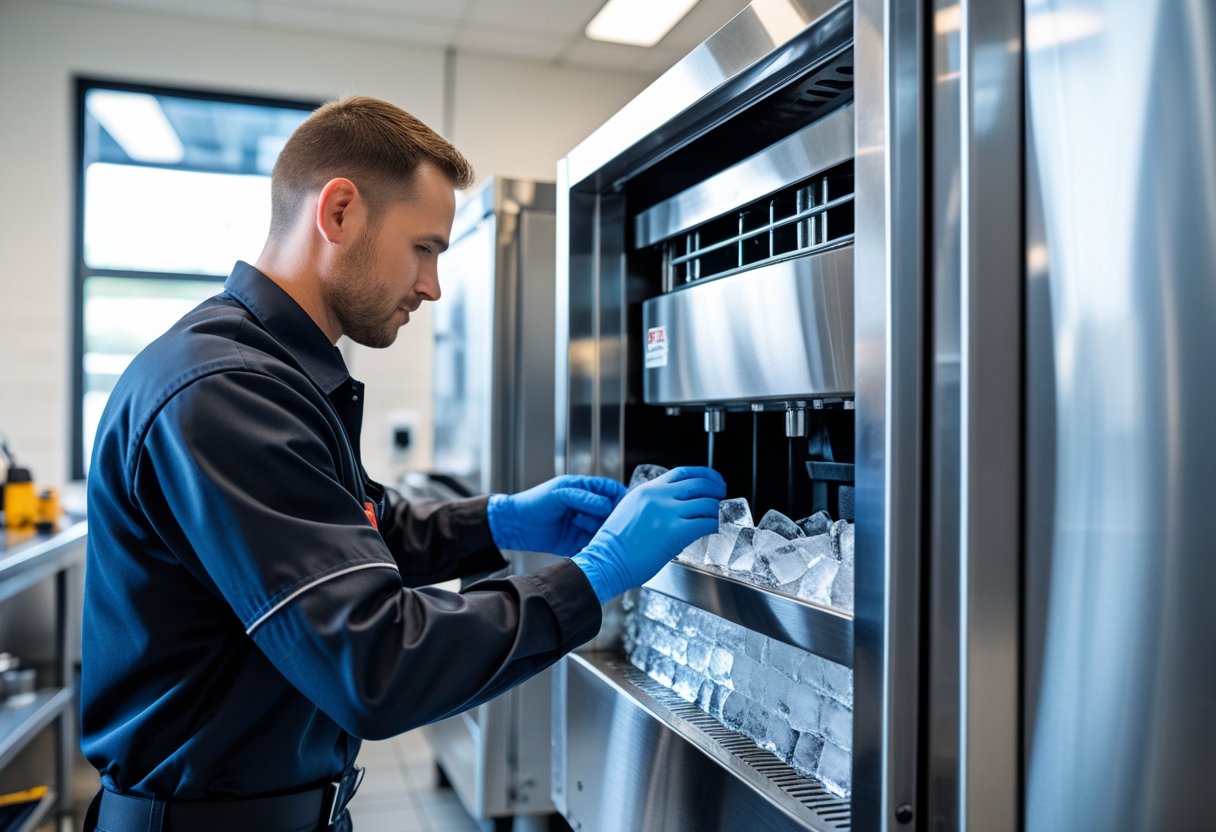
Signs Your Ice Machine Needs a Service to Keep Ice Fresh and Reliable
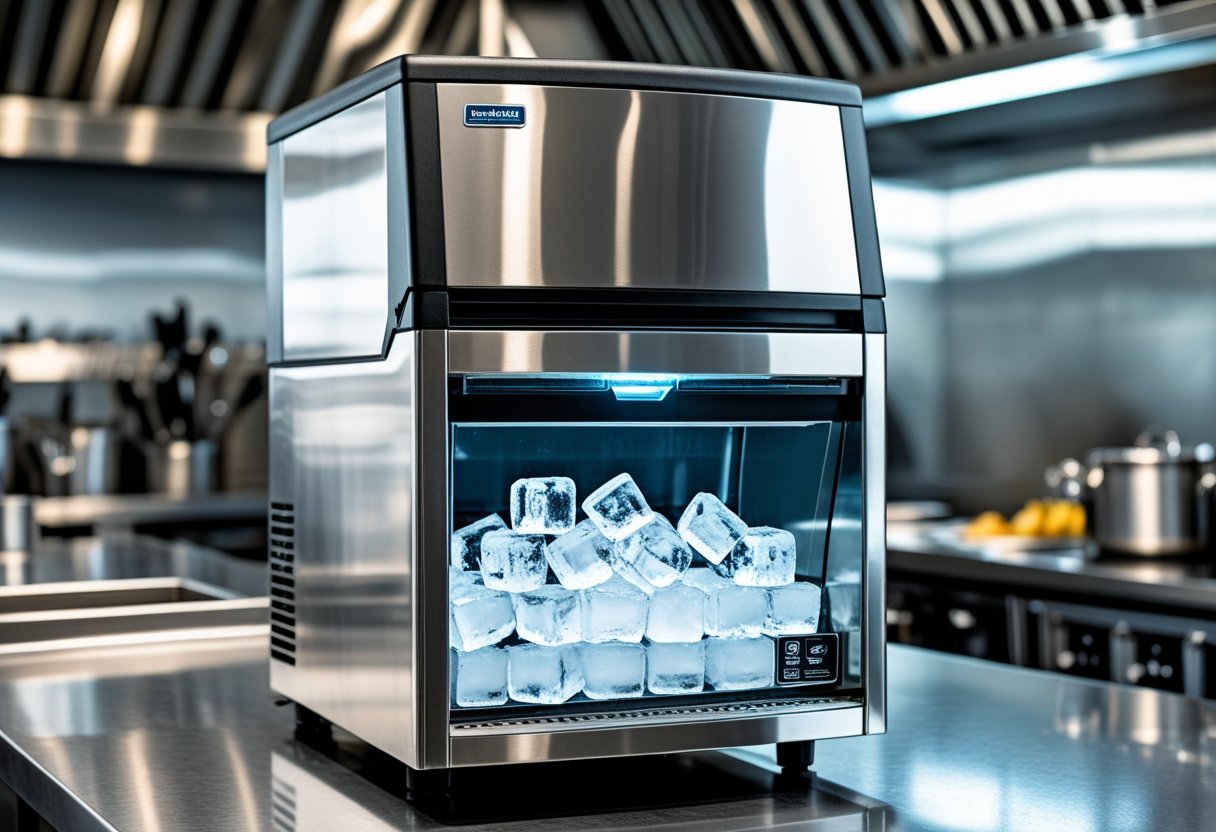
Restaurant Ice Machine Not Working Troubleshooting Tips Made Easy
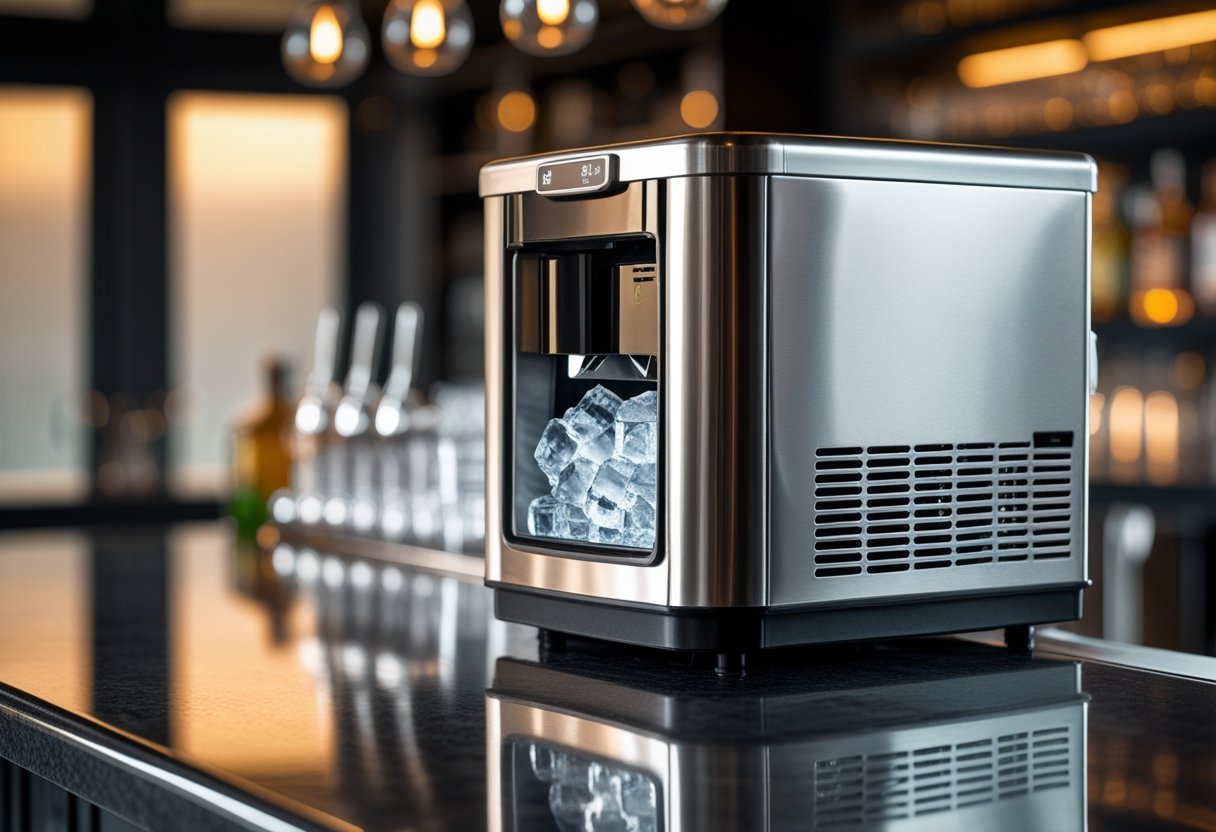
Preventative Maintenance for Ice Machines Tips to Keep Ice Fresh and Machines Running Smoothly

Bar Equipment Refrigeration Guide Tips for Keeping Drinks Perfectly Chilled
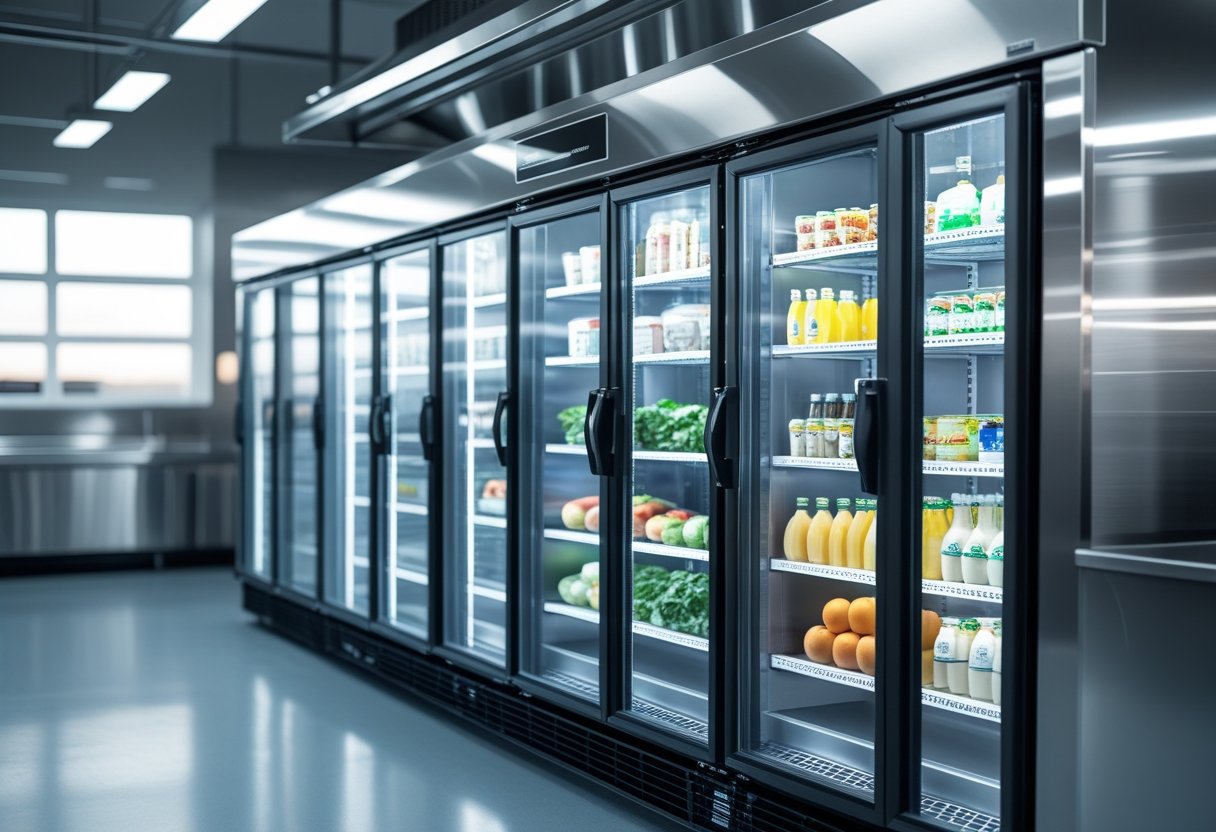
Memphis Commercial Refrigeration Experts Helping Your Business Stay Cool
